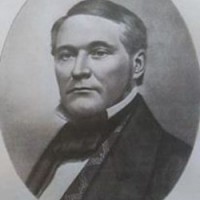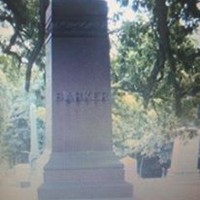Molly Crusen Bishop: Barker had a Midas touch
- Details
- Published on Thursday, 26 May 2016 16:03
- Written by Molly Crusen Bishop
I grew up on Barker Avenue on Peoria’s West Bluff. I often wondered as a young girl if my street had been named after the television game show host Bob Barker, and found this quite odd. There wasn’t anything taught or known about his namesake street in my world growing up.
We had all heard about the Moss, Bradley, and Pettengil families but I never imaged the depth and treasure that lies hidden in our West Bluff streets. The more I research about these names, the more I find that Peoria’s past is filled with intrigue, with both wonderful and sad history to tell.
Barker Avenue’s namesake is a bright and successful story.
Gardner Thurston Barker was born in Essex County, New York in 1814. His parents were Gardner T. and Harriet (Lyon) Barker. He was an educated man and eventually came west to the tiny town of Peoria, Illinois in 1838. Peoria’s population was approximately 1,200 around 1844, and by the 1855 census was close to 12,000 citizens. Quite the population growth in less than a decade.
He married Helen White of Champlain, New York, daughter of Elial and Mary B. (Lewis) White. They had three children. The children were Ellen Barker McRoberts (1843-1923), Walter Gardner Barker (1848-1914) and Jesse Barker Wincup (1856-1877). The family was of the Episcopal faith. They lived near the corner of North Adams and Eaton streets.
Gardner entered into Peoria’s pioneer workforce with Almeran S. Cole in a general mercantile business called Cole & Barker. This later turned into Barker and Stearns, and ultimately with Gardner as the sole proprietor. He entered into the distilling business in the 1860s. He had an intuitive flair for knowing which businesses to embrace, and with all businesses that he took on he had a golden Midas touch financially. Efforts from this one man promoted Peoria commercially, industrially, and financially. His judgment and unbridled energy helped guide Peoria into financial and commercial successes.
Gardner was an intense man with clear and concise scruples, never wavering from his insightful and intellectual business decisions. He helped develop Peoria from a tiny town to the whiskey capitol of the world.
He was elected to the city council in 1852, and then elected Mayor of Peoria in 1856, 1857, 1862, and again to a two year term in 1870. He was a part of the Democratic Party and led Peoria politically with a business mind and a progressive view. He held a deep love for Peoria and its welfare and he helped get rid of useless spending.
Garnder retired from most of his businesses in 1887 and became president of Commercial National Bank and of Allaire-Woodward Chemical Company. Gardner helped guide Peoria when the city took up bonds and borrowed large sums of money from New York, and helped negotiate it wisely.
In the 1870 Census it lists Gardner Barker as the city mayor, real value as $40,000, personal value as $10,000.
Gardner Thurston Barker passed away on October 26, 1894, leaving his son Walter as the new president of Commercial National Bank. His wife Helen White Barker had passed away in 1891.
He was in Peoria 56 years and saw it when it was little more than mud and a few wooden structures and wooden planks randomly placed along the roadways to a boomtown river city and the whiskey capitol of the world. In 1866 Peoria’s population was around 25,000 and growing rapidly.



















































